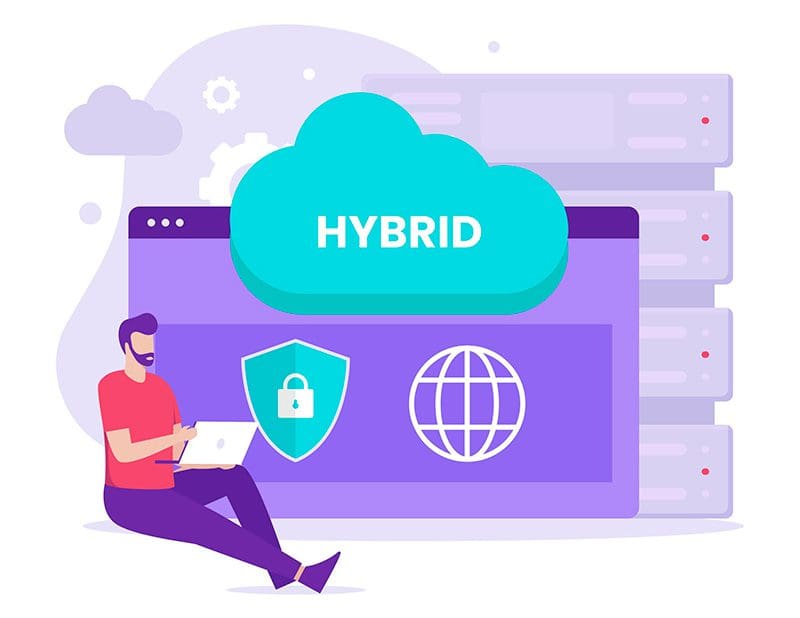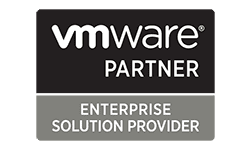What is Hybrid IT and is it the Right Solution For Your Business?
Get the Best of On-Premise and Cloud Solutions
Editorial Team
6 Min Read
Hybrid IT is growing in popularity among businesses. It offers limitless flexibility and customization in computing infrastructure. It also allows companies to place specific applications in optimal environments based on their preferences. Businesses can combine in-house systems with modern, cloud-based solutions. When structured effectively, hybrid IT management offers significant cost savings, improved efficiency, and enhanced security over formats that only use legacy systems.
What Is Hybrid IT?
Hybrid IT is an enterprise computing strategy incorporating in-house information technology (IT) resources and cloud-based solutions. While some businesses prefer the hybrid IT model as a short-term fix for scalability, others use it as a permanent solution. A company using hybrid IT long-term can keep its core IT infrastructure while trusting a cloud-based service to handle its secondary needs.
Hybrid IT works well for businesses with dedicated personnel managing specialized applications. It allows these key professionals to focus on their essential duties without worrying about other monotonous IT responsibilities. Additionally, hybrid IT enables organizations to move specific infrastructures to the cloud at their discretion rather than migrating everything at once.

When exploring hybrid IT as an option, it’s vital to avoid confusing the concept with hybrid cloud. While hybrid IT combines two types of services, a hybrid cloud consists of two or more geographical cloud locations that store data and applications. A hybrid IT system can incorporate a hybrid cloud, but a hybrid cloud doesn’t necessarily pertain to hybrid IT.
Hybrid IT Benefits
When switching to a hybrid IT management solution long-term rather than as a stopgap strategy, the advantages become more apparent. Some of the primary benefits companies experience when implementing hybrid technology include:
- Flexibility: Hybrid formats let organizations maximize performance and better utilize resources by decreasing the time spent implementing and maintaining systems. Hybrid configurations also allow businesses to support specialized legacy applications on-premise without sacrificing the benefits a cloud solution can provide. In a hybrid environment, IT teams can align specific technology platforms with certain workloads and applications to maximize efficiency and performance.
- Cost savings: While upgrading legacy IT software and hardware can be a considerable capital investment, hybrid IT models usually require businesses to pay only for the services they use. This is especially true if the provider offers customized plans. Cloud capabilities often free up valuable in-house IT personnel from everyday operational tasks, allowing them to focus on critical computing duties and projects that generate revenue. Careful monitoring can provide considerable savings and ensure an optimal return on investment.
- Security: Hybrid IT configurations allow companies to distribute data based on specific security concerns. They enable businesses to store critical and proprietary information on more secure, local servers and keep sensitive data behind their firewalls while exporting other information to the cloud. IT teams can benefit from both environments and manage security controls accordingly.
The Challenges of a Hybrid IT Structure
While a hybrid IT solution gives companies the flexibility to operate on-premise and in the cloud, managing the structure poses some challenges, specifically during the implementation stages. Organization and planning are vital, primarily when determining which functions will migrate to the cloud and which ones will stay in-house.
Some potential hurdles include:
- Managing the blended solution: The lack of automation in a hybrid IT environment means internal teams must manage the siloed resources separately. By introducing cloud computing, organizations face the added tasks of backups, updates, security, and configurations while maintaining the operations of their legacy systems. The added work can be challenging, particularly for smaller companies with limited resources.
- Contending with legacy equipment: Companies still need to upgrade and maintain their legacy equipment as it becomes obsolete. These upgrades can include purchasing and maintaining hardware and other network requirements. Without the appropriate care and maintenance, neglected legacy apps can influence the overall performance of the hybrid model.
- Making complex system modifications: While changing or configuring cloud services to meet a specific need is quick and easy, reconfiguring these functions on a legacy system takes time. The process might involve reprogramming or making hardware upgrades. If a company’s primary enterprise computing operates with legacy resources, the entire system is compromised during modification.
Types of Hybrid IT Solutions
Hybrid IT solutions typically come in three formats — SaaS, IaaS, and PaaS.
- SaaS: Software-as-a-Service (SaaS) solutions involve providers using the web to deliver their services and applications. They are often subscription-based and provide easy access through a web browser, eliminating the need for complex installation or special hardware. SaaS solutions allow businesses to migrate specific functions to the cloud while retaining control over in-house infrastructure and existing programming.
- IaaS: Infrastructure-as-a-Service (IaaS) solutions offer remotely hosted infrastructures where companies can run processes, store data, and host applications through self-service. They provide servers, networking hardware, and storage, all accessible through the internet. IaaS service providers typically include log access, security measures, monitoring, load balancing or clustering, data recovery features, and other customizable services as part of their sales packages.
- PaaS: Platform-as-a-Service (PaaS) solutions typically offer a combination of SaaS and IaaS by providing both tools and infrastructure. These solutions work well for businesses wanting to develop and host their own applications by maximizing their software development life cycle efficiencies. Companies often obtain PaaS solutions in cloud-only environments.
How to Implement a Hybrid IT Strategy
Some strategies that can help with the implementation of hybrid IT technology include:
- Organization and planning: When considering the adoption of a hybrid IT infrastructure, businesses must account for service provider fees. They should also evaluate the costs of simultaneously operating an on-premise and a cloud-based system. It’s vital for businesses to understand the service-level agreement (SLA) to ensure they’re not paying for unnecessary service. The most critical aspect of planning is deciding which functions to keep in-house and which ones to transfer to the cloud.
- Security verification: Companies can perform comprehensive security audits to evaluate current users and permissions while confirming the security of all credentials. Training is key to ensuring IT teams are up to speed with cloud-based technology.
- Optimization: Once the environment is set up, monitoring is essential to ensure no gaps in performance or security. Companies should implement practices that dictate evaluation measures — specifically how frequently they occur and who conducts them. Companies can use metrics to evaluate spending and resources, making the necessary adjustments when beneficial.
By executing solutions that make hybrid IT simple to manage and control on-premise and in the cloud, companies can better meet the needs of their clients and their individual IT operations. An optimal hybrid IT strategy allows a company to become more competitive, move faster and accelerate innovation.




